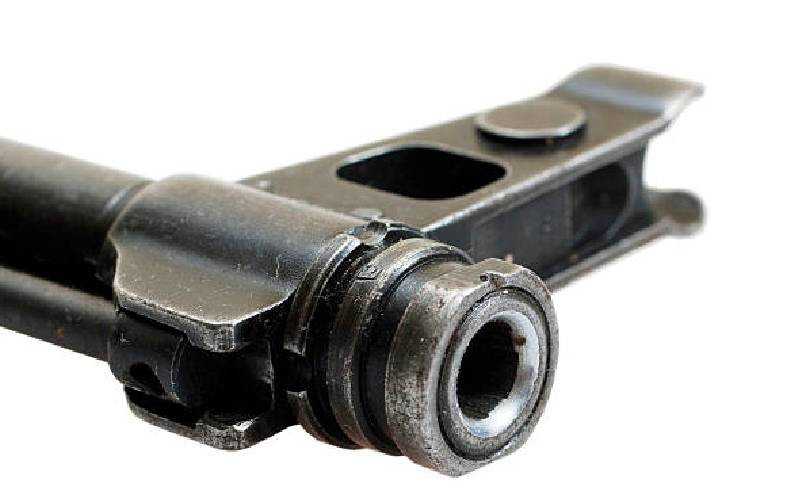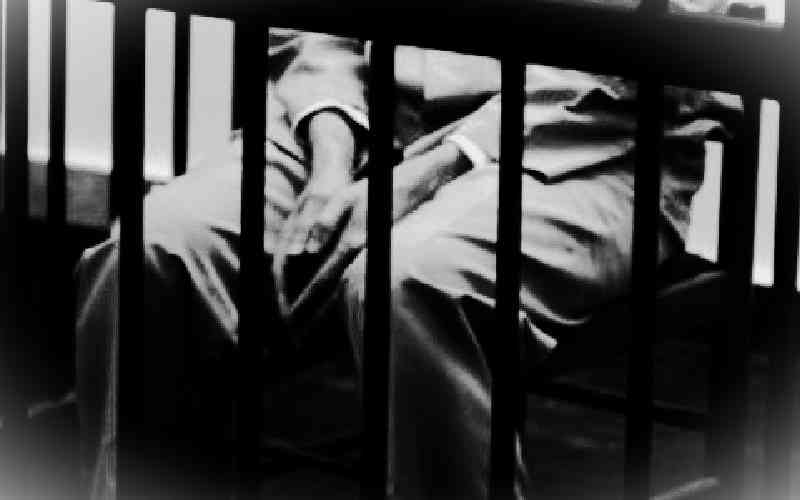By Michael Oriedo
A monkey dangles precariously from a branch of a gigantic baobab tree. Under the tree, a giraffe cranes its neck staring at the monkey as if perturbed by its antics. A tortoise, dwarfed by the tree and the giraffe, struts away leisurely.
From a distance, a crocodile keenly watches the giraffe, perhaps intent to make a meal of it. Lying at another spot in the habitat is a horned head of a buffalo.
This is not a scene at a famous national park or game reserve, but an artist’s depiction of life in the jungle.
Using wires and banana fibres, Mr Francis Akunda models sculptures that depict Kenya’s diverse wildlife and addresses issues that threaten their survival.
 |
Mr Francis Akunda at work. Photo: Michael Oriedo/Standard |
"I love wild animals. When I mould, I ensure the sculptures resemble the animals in every aspect so that people can easily identify them," he says.
"Using banana fibre helps my work look authentic," he adds.
Akunda, a former street boy who was jailed for theft, is now a rehabilitated sculptor using the skills he learnt in prison to perfect his work.
He starts by creating outlines of the animals using wires.
"I collect wires from garages, metal workshops and other places where I can find them. Then, with a pair of pliers, I meticulously twist and turn them into animal shapes," he says.
Once the frame is ready, he prepares banana fibres, which he uses to outline the animal’s body.
"I soak the fibres in water for a while to make them soft and easier to wind on the skeleton," he explains.
Correct shape
Thereafter, he shreds some of the fibres into threads, which he winds round the wire frame to make it firm and give it the shape.
Stay informed. Subscribe to our newsletter
The remaining fibre, he creatively stuffs into the animal frame while fastening with glue and shaping to achieve the correct figure.
"It is a process that needs painstaking care and patience," he says.
"You must get the animal’s features correctly lest you create what does not exist or your work may look unreal," he says.
The complexity of the process depends on the animal in question.
"I can make a butterfly in a day, but a crocodile or a buffalo will take a few days or even a week since they have lots of features to cover," he says.
After he is done with the preliminaries, he paints the work with varnish.
"The paint makes the sculptures shine and preserves the raw material from decaying or losing its lustre," he says.
The 36-year-old says he gets his ideas from pictures in books, documentaries and other television programmes.
"I have never seen some of the animals I sculpt but through imagination I create them," he says.
Akunda started the art while in primary school about 27 years ago. Then a pupil at Sinai Youth Mission Centre in Nairobi’s Babadogo area, a teacher asked them to make a wood carving of a giraffe.
Instead of following the teacher’s instructions, he chose to model using wires and banana fibres.
"The teacher liked my work. He forgot that I had disregarded his directive. I emerged top in his subject. From then I began nurturing my talent," he says.
A few years later, however, he dropped out of school due to family problems.
Street boy
"I was living with relatives who were treating me cruelly. I ran away from home and became a street boy," he reminisces.
While on the streets, he says, he found his way into chang’aa brewing dens and crime.
"I was in and out of jail many times for different misdemeanours I committed," he recalls.
In 2002, eager to use his talent, he relocated from Dandora area, where he had been living, to Ngong. He teamed up with a friend and began making artefacts.
"I made and sold the items in Ngong and Karen."
However, seeing that he was taking time to sell his wares and the money was little, he reverted to crime.
While at it, police arrested him with stolen household items. This offence made him serve four years at Athi River Prison.
Marketing artefacts
When he completed his term in April, Philemon Trust, an ex-prisoners’ rehabilitation centre based in Waithaka, accommodated him.
It is at the centre that he exploited his artistic skills.
"I learnt polishing in prison and got a Grade II Certificate. I am combining it with my art to make quality sculptures. I will do sculpturing for a living, I will never go back to crime," he swears.
Mr Dennis Gakara, Philemon Trust Halfway House Manager says Akunda is talented.
"He creatively uses available materials to do amazing work. Through his work one sees Kenya’s wild animals," says Gakara.
He says the institution plans to open an art centre where Akunda and others will create, display and market their work.
"We want him to teach the art to his colleagues, especially young boys from prisons. We also intend to start marketing the artefacts both locally and abroad," Gakara adds.
Through art, Akunda hopes to educate people about wildlife and address many issues that affect wild animals, including poaching.
 The Standard Group Plc is a
multi-media organization with investments in media platforms spanning newspaper
print operations, television, radio broadcasting, digital and online services. The
Standard Group is recognized as a leading multi-media house in Kenya with a key
influence in matters of national and international interest.
The Standard Group Plc is a
multi-media organization with investments in media platforms spanning newspaper
print operations, television, radio broadcasting, digital and online services. The
Standard Group is recognized as a leading multi-media house in Kenya with a key
influence in matters of national and international interest.
 The Standard Group Plc is a
multi-media organization with investments in media platforms spanning newspaper
print operations, television, radio broadcasting, digital and online services. The
Standard Group is recognized as a leading multi-media house in Kenya with a key
influence in matters of national and international interest.
The Standard Group Plc is a
multi-media organization with investments in media platforms spanning newspaper
print operations, television, radio broadcasting, digital and online services. The
Standard Group is recognized as a leading multi-media house in Kenya with a key
influence in matters of national and international interest.










